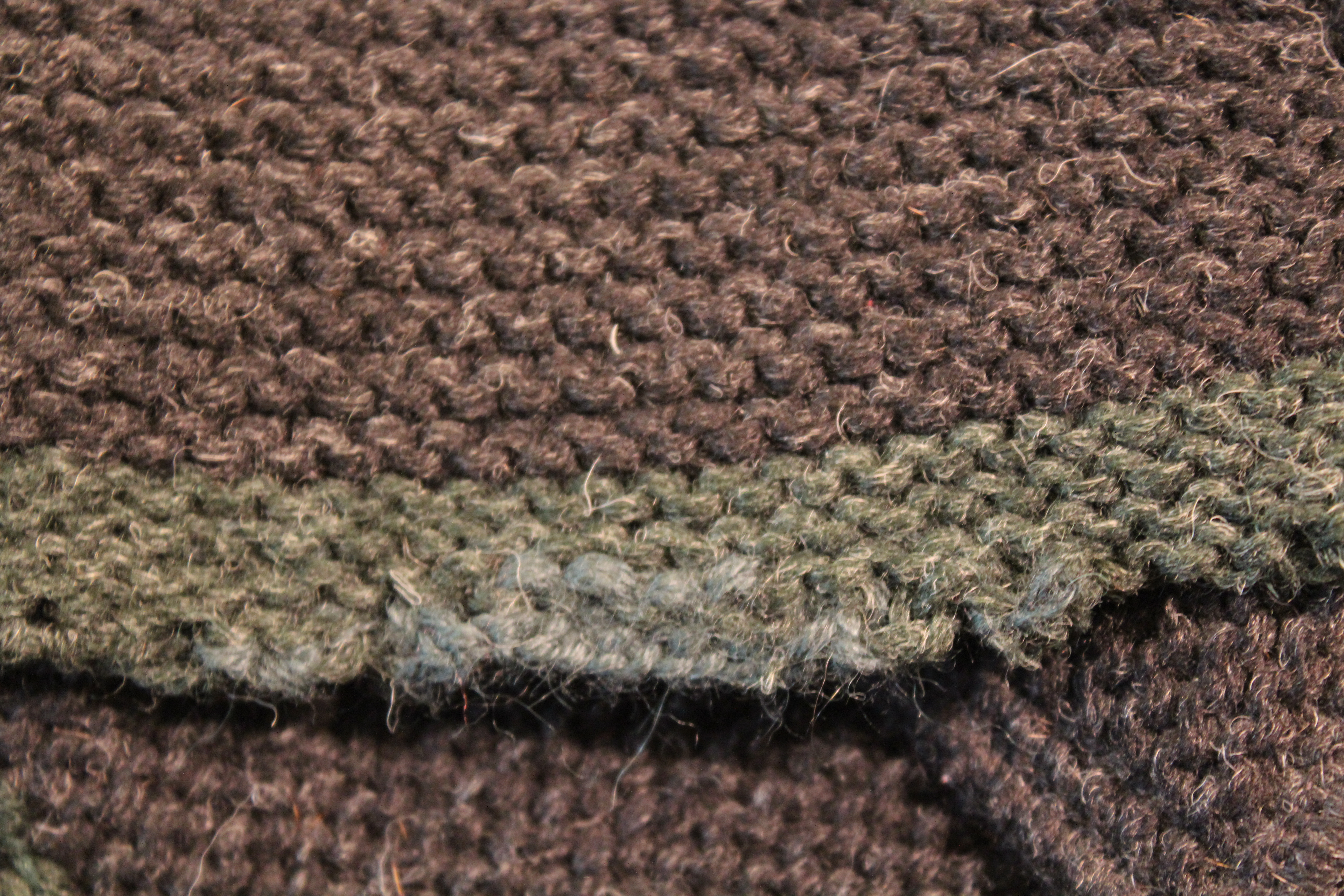Remember how yesterday I said I had everything left but the seaming? Well, dear stitchers, that’s what I get for being over-confident.
Yesterday, oh yesterday, the future was looking bright. I had a sweater nearly done, a window in which to finish it, and a baby that would look adorable in said sweater. Turns out, not so much.
You see, the problem starts with the sleeves. I’d worked on the sleeves over the weekend, when I was teaching at Fibre Space. I’d mentioned before how I was winging it, a little, on the sweater? I mean, I’d worked out some rough numbers, and I knew basically how a sweater was supposed to look and fit. I figured I could go from there.
Since I had a limited amount of yarn left (I was rather committed to only using one skein, since I’d technically “stolen” it out of my business inventory), I decided to knit the sleeves two at a time. That way, I wouldn’t have to remember the shaping decisions I made when I went to work the second sleeve. Also, that way if I ran out of yarn, and the sleeves ended up a little short, I could just claim they were meant to be three-quarter sleeves. Not a big deal.
My first downfall would have probably been leaving the rough numbers and calculations I made at home. My second downfall was deciding I’d just eyeball things.
And my third downfall was ignoring my little niggling feeling in the back of my mind when I looked at the sleeves two-thirds of the way through, and wondered if they would be wide enough. Instead, I allowed myself to feel smug when I finished the sleeves with only a few yards left to go. “Just enough to seam,” I thought.
I think you know where this is going. The sleeves? They’re really, really small. See those sleeves? Yes, they’re curling up, but even when they’re spread out, they’re still small.
Still, I was in enough denial (it’s the yarn fumes, I swear), that I managed to seam one of the sleeves together, and pin it to the body of the sweater. And then, just to verify, I shoved my child’s arm down the sleeve to truly see if there was any hope of salvaging things.
If you can’t tell, that’s my child, with her arm out, rather puzzled as to why she can’t bend it. Hint: the reason is the stitches are so stretched out in order to get her arm thru the sleeve that she can’t bend her arm.
So the sweater, is in timeout where I decide if I want to unravel and re-knit the sleeves or raid the business for another skein to finish things off.
And to look at my numbers to see where I went wrong. Wish me luck.

![IMG_20170128_195444[1]](https://i0.wp.com/tinkingturtle.com/wp-content/uploads/2017/01/IMG_20170128_1954441-768x1024.jpg)
![IMG_20170130_094404459[1]](https://i0.wp.com/tinkingturtle.com/wp-content/uploads/2017/01/IMG_20170130_0944044591-576x1024.jpg)

![IMG_20170127_153327961[1]](https://i0.wp.com/tinkingturtle.com/wp-content/uploads/2017/01/IMG_20170127_1533279611-576x1024.jpg)









